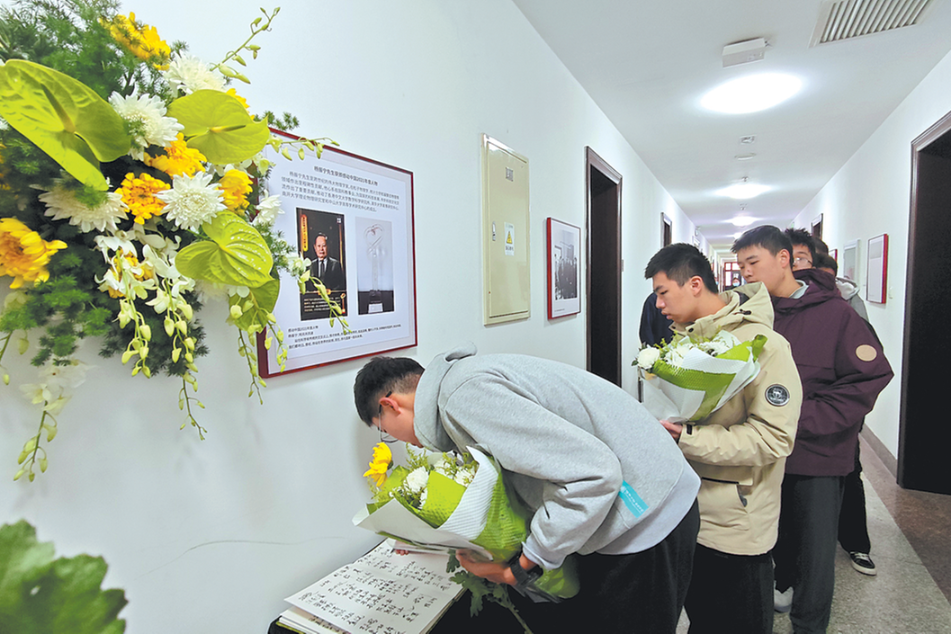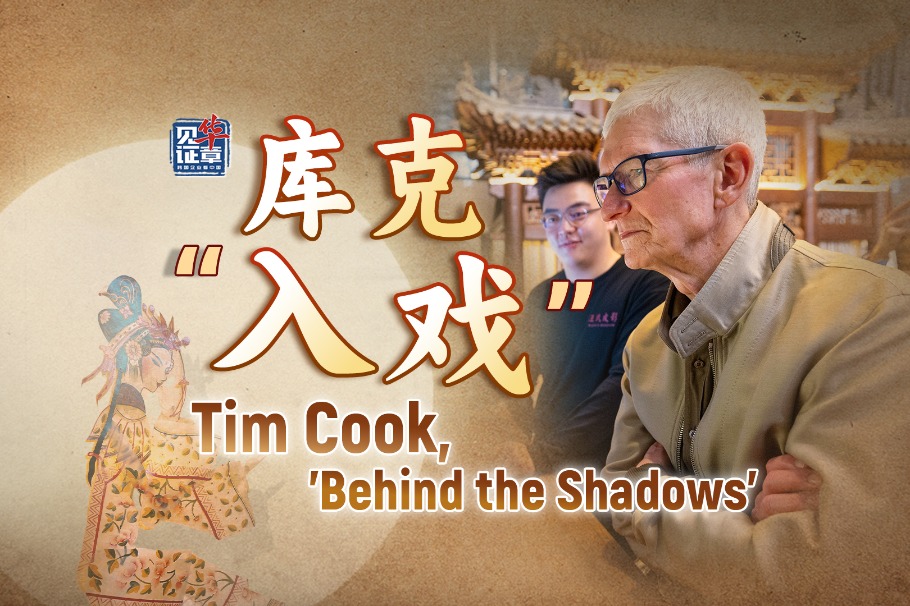A complex family legacy
Descendant restores his clan's former homestead while promoting regional traditions, Fang Aiqing reports in Shantou, Guangdong.

Around the ancient port of Zhanglin, in Chenghai district of Shantou, once known as Swatow, in Guangdong province, lush camphor, banyan, papaya and sweet-scented Osmanthus trees shield outdated dwellings and courtyards.
In the ponds, water lilies generously display their soft red appeal, which offers a vivid contrast to their emerald chaperones.
Many households keep well-groomed bonsai in their yards, while an Indian spurge tree almost reaches a bungalow roof and an areca palm unconsciously relaxes its leaves on the stone balustrade of another building's second floor.
Taking several turns in the alleys leading from the river that runs into the nearby sea, an open area with a row of centuried houses comes into view.
They are built and decorated with a blend of Chinese and Western styles, especially highlighting the use of light blue house beams, doors and window shades.
Such color was once widely applied in Southeast Asian countries like Thailand, Cambodia, Singapore and Vietnam. An impressive example may be found in the 1992 film adaptation of Marguerite Duras' well-known novel The Lover, a love story set in colonial Saigon, today's Ho Chi Minh City of Vietnam, directed by Jean-Jacques Annaud.
Located in Tangxi village, the houses belong to a clan of Chen, which built up a fortune with a fabric business in Thailand before sending funds back home and importing some of the materials to build the houses, which were completed in 1921.
Once left unattended, the houses are now under renovation by the descendants of the Chen family, led by Chen Ye, 39, a lecturer of Chinese philosophy at South China Normal University in Guangzhou, the provincial capital.
During the process, the Chens have had the chance to dig deeper into their family history, both at home and abroad, and reflect on their connections with local society.
More importantly, they are seeking to pass on the family tradition of giving back to the neighborhood — which has helped them build a reputation over the past century — by preserving and revitalizing traditional culture of the Chaoshan region, referring to the Guangdong cities of Chaozhou, Shantou, Shanwei and Jieyang.
East meets West
The houses, called demao nei (Chen Demao's home) or dehe li (residence of virtue and harmony) in general, were originally built symmetrically, but have been partly destroyed, either by Japanese invaders during the War of Resistance Against Japanese Aggression (1931-45), or through natural weathering.
What remains is an ancestral hall in the middle of the complex, flanked by study buildings on both sides, and a residence to the west. Gardens on both sides and the residence on the eastern side have, sadly, not survived.
According to Chen Ye, when his great-great-granduncle Chen Xinmu (1873-1939) and great-grandfather Chen Yanchen (1892-1924) built the houses, they built the ancestral hall together, but hired two teams of craftsmen to design and build the structures on either side.
It was a local convention to form a competition and encourage creativity, resulting in totally different architectural styles on each side of the main hall.
Today, the gold-lacquered wood carvings depicting classic historical stories on the beams of the ancestral hall, a renowned, time-honored genre of handicrafts that originated in Chaoshan, remain vivid and glittering.
Stone reliefs of figures and auspicious flora and fauna, inscribed boards and calligraphy works engraved on stone walls and pillars present the clan's parental instructions, which are deeply rooted in ancient Confucianism.
In the courtyard of the remaining, westerly residence, where Chen Ye's grandparents used to live, a bulky wooden table and chairs are placed under a wisteria, which scatters its pinkish purple petals over them. They are made of ship wood. Soaked in salt water for a long time, the wood is well protected against decay.
While the main body of the architecture is in traditional Chinese style, the arched windows facing the courtyard are painted blue, and the door frame of the inner room has on it a wooden relief image of European noblewomen on a boat excursion.
The doorway of the west study is decorated with a relief of two angels encircling a globe, whereas the east study has a stone pavilion with traditional overhanging eaves and Corinthian columns.
Both of the studies were where the owners hosted guests, with their decor and many calligraphy works by renowned artists of the time displaying the family's intellectual taste and values.
In the west study, the calligraphy works carry traditional aphorisms emphasizing modesty and inclusiveness. In the east building, however, the words meet the needs of a much more modern, competition-oriented society.
The houses are where angels and bats, traditionally bearing auspicious meanings, meet on the wall, while a Western pool and a Chinese well are also installed.
Ancestral history
In his heyday, Chen Xinmu used to be a board member of the Thai-Chinese Chamber of Commerce. His nephew Chen Yanchen also sailed south at the age of 15, working hard during the day and learning local languages at night, and was acclaimed for his ingenuity.
They promoted the use of domestic products in business, while back home, Chen Xinmu founded a vocational school especially for women to improve their lives, a pioneering deed in the early 20th century.
Located on the outskirts of the village, the family donated money to projects that guarded against natural disasters and contributed to safeguarding the security of the neighborhood. Historical archives show that they helped deter a gang of robbers in 1922.
During wartime, they lent the houses to a local middle school to use as temporary classrooms and dormitories, and the Chinese army were quartered there during the War of Resistance Against Japanese Aggression and again in the 1950s.
Since the 1980s, the younger generations of the family have also sponsored road and campus construction, publication of local literature and development of local operas.
As one of Chen Ye's granduncles achieved the status of Datuk, the local equivalent of a knighthood, in Penang, Malaysia, generations of the Chen clan have also been promoting Chinese language and cultural education there.
In 2019, several years after Chen Ye's grandparents passed away, he spent part of the summer holiday cleaning up the vacant residence and sorting through the remaining belongings of the older generations.
As many previously unknown things came to light, he realized that it was his generation's duty to dust off the family history and accurately recount the life stories of their ancestors, fill in the family tree, and enhance the kinship with their relatives overseas.
It was not until he tore down a rusty warehouse in the forecourt that he discovered the symmetrical structure of the grouped houses, and that, in the past, the houses were all interlinked. Later he knocked down the barrier wall and restored the octagonal door that connects the west study with the ancestral hall.
For Chen Ye, the renovation is progressing slowly due to limited funds and the time he can spare from his busy working schedule in Guangzhou, but it's filled with surprises.
For instance, by chance, he found a stele embedded in the wall of the ancestral hall, hidden behind a layer of hardened dust. It is inscribed with the family's story, from how it came to settle in Zhanglin to how it started businesses in Thailand and Japan.
Apart from frequent contact with overseas relatives to piece together shards of family history, Chen Ye was particularly moved by the gesture of an elderly relative whom he has never met. Based in Malaysia, she is a daughter of one of his great-grandfather's siblings, who, upon hearing about the restoration of the houses, transferred funds to Chen Ye, amid all the inconvenience incurred by the COVID-19 pandemic.
It was also an act borne of a long-standing tradition.
For decades, the family members overseas have sent money home to support relatives who remain, usually in the form of qiaopi, a combination of letter and remittance certificate from overseas Chinese emigrants in the 19th and 20th centuries, especially those from Guangdong and Fujian provinces.
Chen Ye notes that one particular grandaunt in Singapore, now in her 90s, has been sending the same sum every Spring Festival for nearly 70 years until recently, when it became too physically difficult for her.
Dance hall
Cai Haisong, an expert in traditional Chaoshan-style architecture, once told Chen Ye that very unusually, demao nei has been kept in use for a century, sometimes privately owned and sometimes as public institutions, which has prevented major damage to the buildings.
Since he took up the deed, Chen Ye has been welcoming communal activities at the ancestral hall and the west study, such as women's gatherings and skills training, free clinics, as well as lectures and panels on culture and history, as a way to revitalize the old buildings.
But now, he and a group of companions, including his junior high school music teacher Chen Nan, are investing their efforts into a 300-year-old folk art, which is a combination of dance, opera and martial arts and is native to Chaoshan.
With painted faces and a pair of short sticks in hand, the performers of Yingge dance jump and swing, tapping the sticks while walking and dancing, accompanied by gongs and drums and shouts.
Since Chaozhou's Zhongjing Yingge dance troupe was invited to Zhanglin in early March, local youngsters have shown extraordinary interest in the art form.
Chen Ye says, the strong rhythms and the visual impact of the face paint, usually based on the heroes of classic novels like The Water Margin, seem to appeal to the younger generation, while Chen Nan points out that parents welcome it, as their children put aside their devices, build up their body and inherit traditional culture.
The troupe has visited the hall an additional three times since, teaching for free, with hundreds in attendance.
The duo made up their minds to establish their own local troupe. Chen Ye hopes that, by doing so, it will arouse people's interest and raise awareness of his ancestral home and family history.
The ancient port of Zhanglin, historically one of the starting points of the Maritime Silk Road, has been through prosperity and decline, but the clan culture and sense of home cultivated there remain an important trait of the locals and, as Chen Nan puts it, always drive them to serve the neighborhood with responsibility and without reserve.
"The revitalization of these old buildings and Zhanglin, the hometown of many overseas Chinese, is forged by young people's desire to return to their cultural origin, and the innovation of traditions. We are exploring a new chapter to bring prosperity to the area through culture," Chen Ye says.
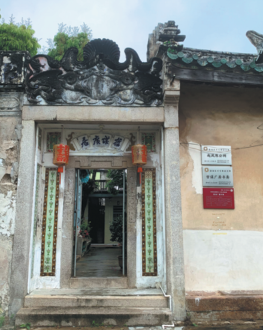
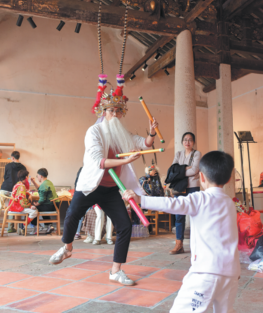


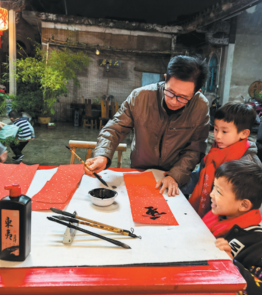
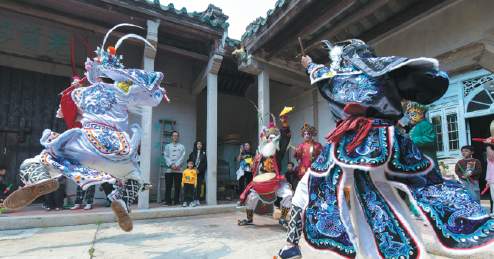
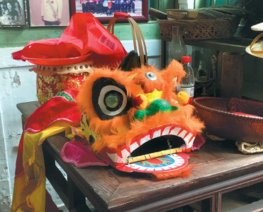
Today's Top News
- Four villages honored by UN Tourism
- Amazon outage shuts down global internet platforms
- China, EU expected to play key role at COP30
- Farmers return to their roots to reap abundant profits
- Five-year plans steer decades of progress
- GDP momentum keeps growth on track


















